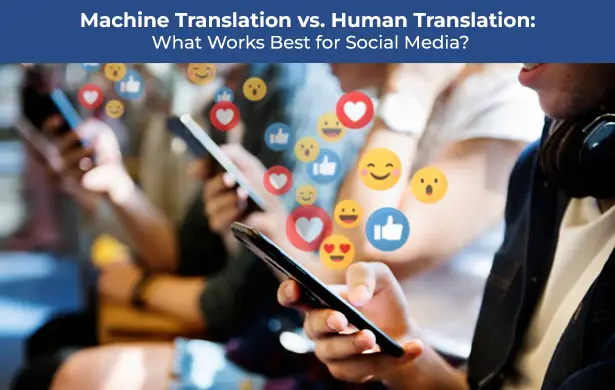
In the era of global connectivity, social media has become a powerful tool for brands, influencers, and individuals to reach audiences across linguistic and cultural boundaries. However, with great reach comes great responsibility, particularly when it comes to language. One wrong word or misunderstood phrase can turn a meaningful message into a viral blunder. That’s where translation comes into play.
The question many social media managers and global marketers ask is, should we rely on machine translation or human translation for social media content? Both options offer advantages, but choosing the right one can be the difference between engagement and embarrassment.
In this blog post, we'll explore how machine translation and human translation compare and which one works best for your social media strategy. Have questions or need expert translation support? Call us at +91 8237060559.
Machine Translation (MT) uses algorithms and AI to automatically convert text from one language to another. Tools such as Google Translate, DeepL, and Microsoft Translator are popular for their speed and accessibility. With just a few clicks, you can translate a post into dozens of languages.
Mention all below 2 points in bullet points
Pros of Machine Translation for Social Media:
What's the catch? Machine translation doesn’t always grasp context, tone, idioms, slang, or cultural nuance, which are all essential elements of human communication in social media content. A witty pun or trending meme might make perfect sense in English, but could turn into gibberish or even offensive in another language if translated literally.
For example, a brand promoting a “killer deal” might find that phrase machine-translated into something inappropriate or confusing in another language, especially where "killer" carries a literal or negative meaning.
Human translation involves a skilled linguist interpreting the meaning, tone, and context of your message before crafting it into another language. It’s not just about replacing words but telling your story authentically and creatively in a new cultural environment.
Pros of Human Translation for Social Media:
What does this mean for your social media presence? Simply put, more engagement, fewer misunderstandings, and a stronger connection with international audiences.
For example, when Coca-Cola entered the Chinese market, they worked with human translators to adapt their brand name into "Ke Kou Ke Le" (which is along the lines of "delicious happiness"), instead of relying on phonetic approximations that would have resulted in awkward or meaningless combinations.
Let’s break down a few social media use cases and compare how machine vs. human translation performs:
Mention all below 4 points in bullet points
1. Short, Informal Posts (Tweets, Captions, Reels)
2. User-Generated Content and Comments
3. Social Media Ads and Sponsored Content
4. Customer Service via DMs or Comments
Honestly, machine translation isn’t the enemy. In fact, when paired with human inspection, it can be a powerful asset. Many brands use machine translation for speed, then rely on human translators to review, localize, and polish the content before it goes live.
This approach combines the best of both worlds.
Apart from broadcasting information, social media also builds relationships, sparks conversations, and creates emotional connections. These are all human experiences, and they require a human touch.
If your goal is to connect with global audiences, build trust, and grow your brand online, then investing in high-quality, human-led translation is non-negotiable.
While machine translation offers speed and convenience, it simply can’t match the nuance, cultural awareness, and creativity that human translators bring to the table, especially on a dynamic and emotion-driven platform such as social media. From clever captions and brand messaging to customer interactions and global campaigns, more than just literal translation, your content needs to connect and not hallucinate, just like machines sometimes do.
For businesses and creators looking to grow their global presence, human-in-the-loop isn’t just a better option but the right one. The most successful social media strategies combine the efficiency of technology with the empathy and insight of skilled linguists to deliver content that resonates across cultures and languages.
Language Services Bureau can help you communicate confidently across languages and cultures. With 45+ years of experience in translation, localization, and multilingual content services, our team ensures your social media content resonates with international audiences—authentically, accurately, and effectively.
Don’t let your message get lost in translation.
Contact us now!